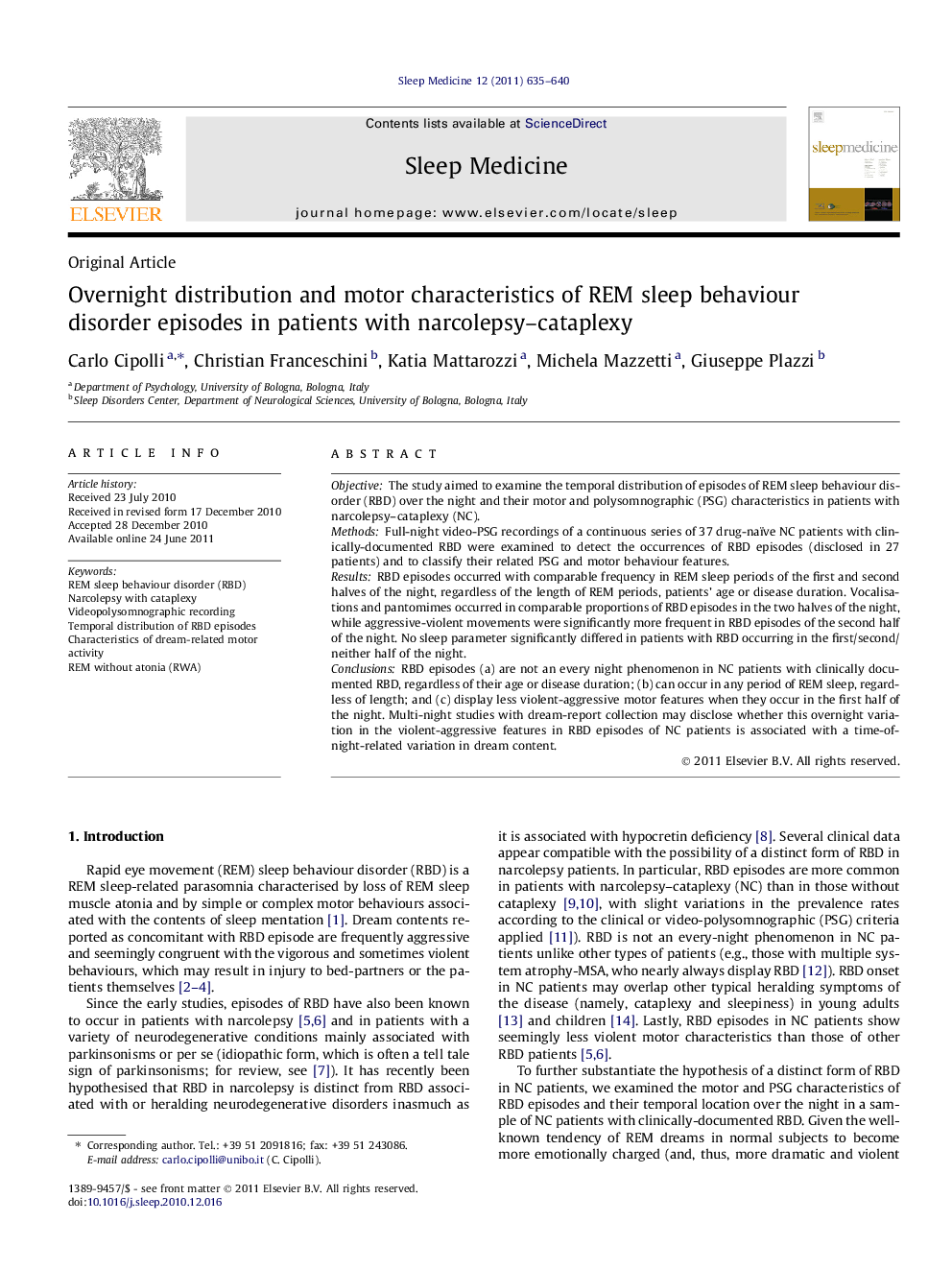| Article ID | Journal | Published Year | Pages | File Type |
|---|---|---|---|---|
| 3177054 | Sleep Medicine | 2011 | 6 Pages |
ObjectiveThe study aimed to examine the temporal distribution of episodes of REM sleep behaviour disorder (RBD) over the night and their motor and polysomnographic (PSG) characteristics in patients with narcolepsy–cataplexy (NC).MethodsFull-night video-PSG recordings of a continuous series of 37 drug-naïve NC patients with clinically-documented RBD were examined to detect the occurrences of RBD episodes (disclosed in 27 patients) and to classify their related PSG and motor behaviour features.ResultsRBD episodes occurred with comparable frequency in REM sleep periods of the first and second halves of the night, regardless of the length of REM periods, patients’ age or disease duration. Vocalisations and pantomimes occurred in comparable proportions of RBD episodes in the two halves of the night, while aggressive-violent movements were significantly more frequent in RBD episodes of the second half of the night. No sleep parameter significantly differed in patients with RBD occurring in the first/second/neither half of the night.ConclusionsRBD episodes (a) are not an every night phenomenon in NC patients with clinically documented RBD, regardless of their age or disease duration; (b) can occur in any period of REM sleep, regardless of length; and (c) display less violent-aggressive motor features when they occur in the first half of the night. Multi-night studies with dream-report collection may disclose whether this overnight variation in the violent-aggressive features in RBD episodes of NC patients is associated with a time-of-night-related variation in dream content.
